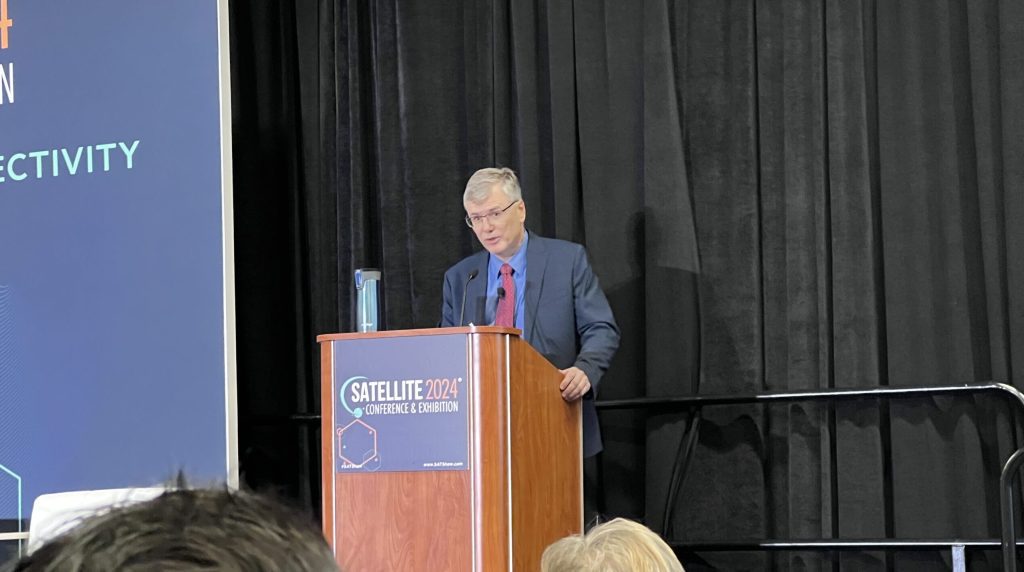WASHINGTON — A senior official from the National Reconnaissance Office said on March 18 that the agency is pursuing a mix of traditional large satellites and newer small satellites in low Earth orbit for its future spy satellite architecture.
Troy Meink, principal deputy director of the NRO, mentioned at the Satellite 2024 conference that the NRO sees value in using new commercial capabilities for specific missions where small satellites can fulfill requirements at a lower cost. Additionally, the agency continues to invest in bigger, more capable satellite buses and launch vehicles for its most critical needs.
The NRO's upcoming launch campaigns reflect this hybrid approach. In the coming days, the NRO plans to place a small satellite into low Earth orbit using a Rocket Lab Electron small launch vehicle, and will then launch one of its largest-ever satellites on a United Launch Alliance Delta 4 Heavy vehicle.
NROL-123, a small satellite mission, will be the first launched by Rocket Lab from its new U.S.-based pad in Wallops, Virginia, during a launch window that opens on March 20. The company has previously flown NRO missions from its launch site in New Zealand.
Meanwhile, United Launch Alliance is aiming for a March 28 launch of NROL-70 from Cape Canaveral Space Force Station, Florida. This will be the final flight of the Delta program.
The NRO acquires and operates the U.S. government’s spy satellites. Meink mentioned that the agency has been adjusting its procurement strategy to take advantage of commercial small satellite technologies and the increasing number of small launch vehicle providers.
“We’ve changed our procurement methods to take advantage of LEO technologies,” Meink said. “But our main priority is to meet the requirements with minimum risk. Physics gets a vote. We can’t do everything with proliferated LEO.”
Planned increase in the number of satellites
Meink noted that the NRO is on a path to continue adding more satellites to its space network, echoing previous comments by agency officials.
Christopher Scolese, the director of the NRO, mentioned last year that the agency aims to quadruple the number of satellites it operates over the next decade and transition to a more diversified architecture of satellites in various orbits.
Last fall, the NRO’s deputy director Maj. Gen. Christopher Povak stated that the “diversification and expansion of our architecture will offer enhanced coverage, capacity, resilience, and more timely data delivery. The variety of assets will make it more challenging for adversaries to disrupt the U.S. intelligence infrastructure.”









